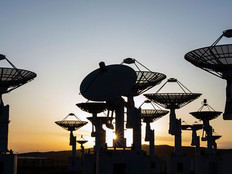The federal government, once slow to adopt new technology for a variety of reasons, is now eager to adopt the newest technologies and practices.
And agencies are hungry for information on how to implement it all, secure it and manage user change throughout the agency.
They’re motivated to stay ahead and utilize commercial best practices as learning lessons. And the President’s Management Agenda — the primary set of guidelines and goals for modernization — calls for “more nimble and effective approaches to keep technologies and workforce skills current and to ensure that the federal workforce can meet future needs.”
They’re motivated by practicality and security. Some agencies need to find ways to continue their missions without additional funding or staff, which advanced technologies can help achieve.
They’re also spurred to action by a generation of workers who want more mobility and flexibility on the job. In an era when the government is trying to attract more cyber workers, creative use of new technology is especially important. It’s also important at a time when remote work has become a critical public health measure.
Get Workers on Board with Emerging Tech Early
The actual adoption of emerging technology isn’t simple. Technical issues aside, buy-in is critical. The traditional methods of bringing employees on board with hardware or process changes work with emerging technology as well. Listen to their concerns, let them participate in the planning and development, and give them ownership of the deployment project, and of the technology itself once it’s up and running.
For example, when the Defense Logistics Agency began installing robotic process automation, its IT staffers found that the bots they were creating looked just like human workers to their networks. The bots logged in the same way with the same security, and did the same work as a human worker. The technology wasn’t the issue.
Instead, what the DLA had to overcome was the reluctance of those human workers, many of whom feared their jobs were going to be lost to automation. The DLA RPA team convinced workers that not only were they not going to lose their jobs, they were going to be able to do more interesting work — and that the bots would fill empty positions that were never going to be filled for budgetary reasons, enabling the department to get more strategic work done.
Combine that with support from the agency director and CIO, and now the Defense Logistics Agency is a leader in robotic process automation, with at least 50 installed so far — in one case, doing the work of 80 FTEs that wouldn’t have been in the budget were they human.
Look to the Private Sector for Best Practices
How did the DLA do it? The RPA team showed their fellow employees exactly what the bots could do. Showing people what emerging technology can do is simple: Just look outside government.
Is a local hospital system using RPA to speed up billing and claims functions? Then that might work for Veterans Affairs or Tricare military hospitals. Do the lines at the cashierless checkouts seem to go faster? Try cashierless point-of-sale at national parks or commissaries.
People use — or are aided by — these new technologies every day outside their workplaces. Federal IT experts can look closely at how the private sector deploys these technologies to customers, and translate the concept back to their own customers, the American public.
Frankly, many “emerging” technologies are well established. Music streaming services use artificial intelligence to choose your next selection. Telecoms are building 5G networks. Practical uses are everywhere.
Let’s put it this way: If that smart thermostat helps you keep your home utility bills down, maybe it will do the same for your agency.











